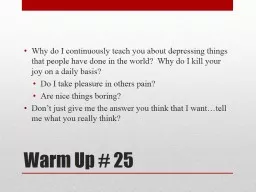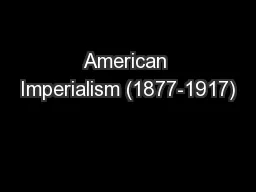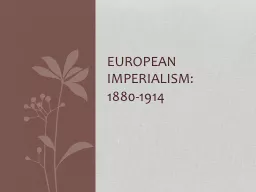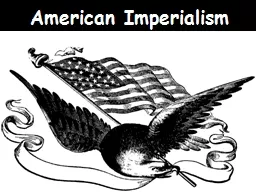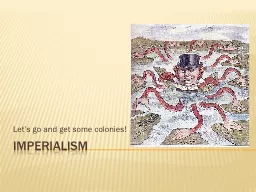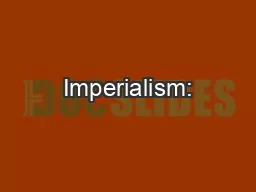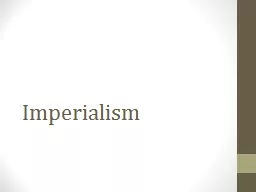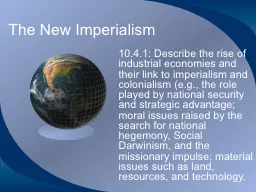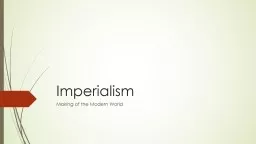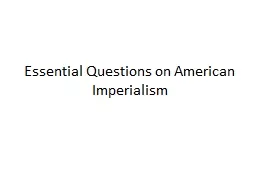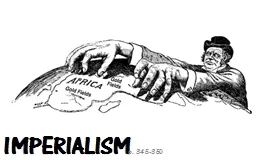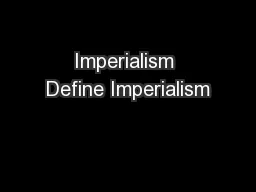PPT-Warm Up # 22 Last class we discussed 4 main causes of Imperialism. What are each of
Author : alida-meadow | Published Date : 2018-11-03
US Foreign Policy at the turn of the century USS Maine Cuba was a Spanish Colony but was fighting for its independence Many Americans supported the Cubans in this
Presentation Embed Code
Download Presentation
Download Presentation The PPT/PDF document "Warm Up # 22 Last class we discussed 4 ..." is the property of its rightful owner. Permission is granted to download and print the materials on this website for personal, non-commercial use only, and to display it on your personal computer provided you do not modify the materials and that you retain all copyright notices contained in the materials. By downloading content from our website, you accept the terms of this agreement.
Warm Up # 22 Last class we discussed 4 main causes of Imperialism. What are each of: Transcript
Download Rules Of Document
"Warm Up # 22 Last class we discussed 4 main causes of Imperialism. What are each of"The content belongs to its owner. You may download and print it for personal use, without modification, and keep all copyright notices. By downloading, you agree to these terms.
Related Documents

